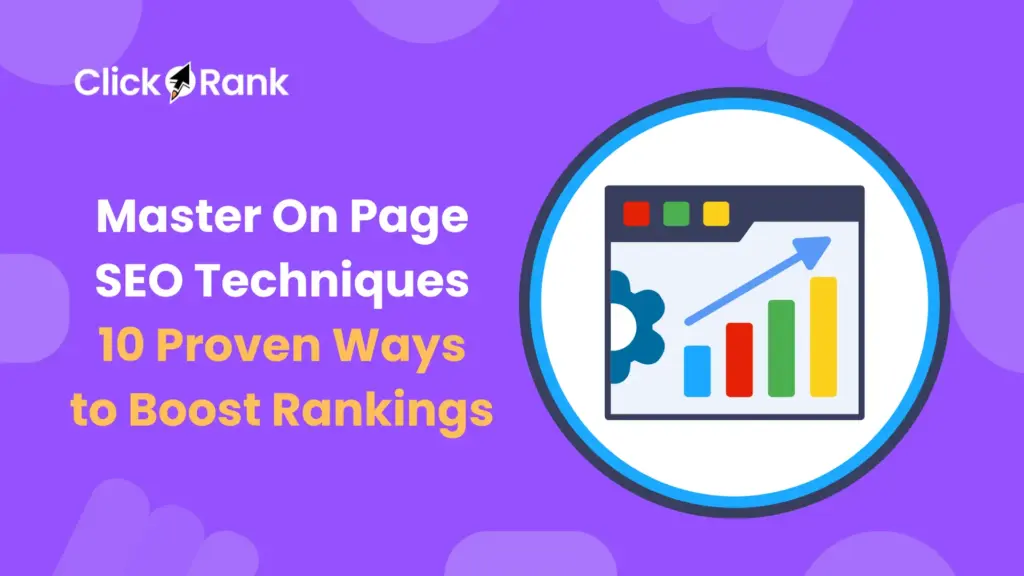You’ve created what you believe is great content. You’ve published it, but it’s not getting found by your target audience. That’s a common frustration, and it points to a missing link in your process. The problem isn’t just about creating content; it’s about connecting that content to the people who need it most.
This is where a Keyword Strategy comes in. Think of it as the bridge between your content and your business goals. It’s not a simple list of terms you hand off to your writers. It is a deliberate plan of action that guides what you write, who you write it for, and how you ensure it gets seen. A solid SEO keyword strategy for on page turns your content from a cost center into a reliable engine for search traffic and growth.
In this guide, you’ll learn a step-by-step process to create and execute a powerful keyword strategy for SEO. We’ll move from high-level planning to on-page execution, showing you how to build a plan that delivers real results.
What Is a Keyword Strategy (And Why It’s Not Just a List of Terms)
Many marketers confuse having a list of keywords with having a strategy. A list is just a collection of assets. A strategy is the plan that dictates how you use those assets to achieve a specific goal. In SEO (Search Engine Optimization), the goal is to improve your ranking on the SERP (Search Engine Results Page) and drive qualified traffic.
Beyond Keyword Research: The Core of a Good Keyword Strategy
Keyword research is the tactical process of finding and analyzing the terms people use to search for information. It’s the data-gathering phase where you identify potential keywords. A keyword strategy, however, is the next level up. It’s the process of selecting which of those keywords to target and creating a comprehensive plan to rank for them.
A strong strategy is directly tied to business objectives. It doesn’t just ask, “What do people search for?” It asks, “What do our ideal customers search for when they are ready to solve a problem we can help with?” This critical distinction is what connects your content efforts to measurable outcomes like leads and sales. A good keyword strategy ensures you’re not just attracting traffic, but the right traffic.
A Keyword Strategy Example: From Search to Sale
Let’s look at a simple example to see this in action.
- Before Strategy: A software company sells accounting software. They perform basic keyword research and decide to target the broad head term “accounting software.” They write a blog post about it but find it impossible to rank against the huge, established brands dominating the first page of Google. They get very little traffic and no qualified leads.
- After Strategy: The company develops a real keyword strategy. They identify their ideal customer: small construction businesses. They then focus on a long-tail keyword strategy, targeting the much more specific phrase “accounting software for small construction businesses.” They create a dedicated landing page that speaks directly to that need. This page ranks much faster because the competition is lower, and every visitor is a highly qualified potential customer.
The difference is clear. The first approach was a guess. The second was a calculated plan that aligned a specific keyword with a specific user need and a specific business goal.
What are the most effective keyword strategies to boost my SEO results?
Choosing the right keywords is the foundation of a successful SEO strategy. Different keyword types can help you target broad audiences, capture high-converting traffic, and dominate local search results. The table below outlines six powerful keyword strategies, complete with descriptions, examples, and action tips to help you apply them effectively for better rankings and targeted traffic.
| Keyword Strategy | Description | Example | Action Tip |
| Short-Tail Keywords | Broad search terms with high volume but high competition. | “SEO” | Use for awareness-stage content and broad industry topics. |
| Long-Tail Keywords | Longer, more specific phrases with lower volume but higher conversion. | “best SEO tools for small business” | Target in blog posts, FAQs, and niche landing pages. |
| LSI Keywords | Related terms that add context and depth to your content. | “search engine ranking,” “Google algorithm” | Include naturally in content to improve semantic relevance. |
| Branded Keywords | Search terms including your company or product name. | “ClickRank SEO tool” | Use for brand reinforcement and reputation management. |
| Geo-Targeted Keywords | Keywords focused on a specific location. | “SEO agency in New York” | Use in local landing pages and Google Business Profile. |
| Competitor Keywords | Keywords your competitors rank for. | “Ahrefs keyword research” | Analyze with SEO tools and create better content to outrank them. |
How to Create a Keyword Strategy in 5 Actionable Steps
Now let’s move from theory to practice. Building a winning strategy doesn’t have to be complicated. You can create a powerful plan by following these five actionable steps.

Step 1: Define Your Marketing Goals and Target Audience
The best keyword strategy always starts with two fundamental questions:
- What do we want to achieve? (e.g., build brand awareness, generate leads, drive e-commerce sales).
- Who are we trying to reach? (e.g., marketing managers at SaaS companies, small business owners in the retail sector).
Your answers will guide every decision you make. If your goal is lead generation, you’ll prioritize keywords that signal commercial search intent. If your goal is brand awareness, you might target broader informational queries to build topical authority. Without this clarity, you’re just choosing keywords in a vacuum.
Step 2: Use a Keyword Strategy Tool for Research and Analysis
Once you know your goals, it’s time to find your keywords. Start by brainstorming a list of broad “seed” keywords related to your business. Then, use a keyword strategy tool like Ahrefs, Semrush, or Moz to expand that list and gather critical data.
Focus on these key metrics:
- Search Volume: How many people are searching for this keyword per month?
- Keyword Difficulty (KD): How hard will it be to rank on the first page for this term?
- Search Intent: What is the user trying to accomplish with this search? Is it informational, navigational, commercial, or transactional?
This is also where you perform competitor analysis. Look at the keywords your competitors are ranking for that you aren’t. This external research can reveal valuable gaps in your own strategy and highlight opportunities you might have missed.
Step 3: Prioritize Your Efforts with a Long-Tail Keyword Strategy
When you first start, you’ll be tempted to go after the head terms with massive search volume. This is almost always a mistake. These keywords are incredibly competitive, and it can take years to achieve a high ranking for them.
Instead, prioritize long-tail keywords. These are longer, more specific search phrases (usually three or more words) with lower search volume but much higher conversion potential. For example, instead of “SEO,” a better target might be “how to do seo for a new website.”
The power of a long-tail keyword strategy is that it attracts users who are further along in the buyer’s journey and have a more specific need. This leads to better engagement, higher conversion rates, and a much faster path to seeing a return on your content investment.
Step 4: Map Keywords to the Buyer’s Journey
A truly effective keyword strategy doesn’t just target random terms; it guides potential customers through the entire marketing funnel. Organize your keywords by mapping them to the different stages of the buyer’s journey:
- Top of Funnel (Awareness): Target informational keywords to attract users who are just starting to research a problem. Examples: “what is content marketing,” “how does SEO work.” Your goal here is to be a helpful resource.
- Middle of Funnel (Consideration): Target comparison or solution-focused keywords. Examples: “best email marketing software,” “Mailchimp vs. ConvertKit.” Your goal is to position your solution as the best choice.
- Bottom of Funnel (Decision): Target transactional keywords that signal a user is ready to buy. Examples: “ClickRank pricing,” “get a free SEO audit.” Your goal is to convert the user into a customer.
By creating content for each stage, you build a comprehensive journey that nurtures a user from initial awareness to final purchase.
Step 5: Organize Everything with an SEO Keyword Strategy Template
Your strategy is not complete until it’s documented. Use a simple spreadsheet or a dedicated keyword strategy builder to create a keyword map. This document should map every target keyword to a specific URL on your website.
Your template should include columns for:
- Target Keyword
- Target URL
- Search Intent
- Monthly Search Volume
- Keyword Difficulty
This keyword map becomes your content roadmap. It tells you which pages to create, which ones to optimize, and how to build out topic clusters of interlinked articles around a central pillar page.
How do I execute my keyword strategy from plan to page using AI?
You’ve built the perfect plan. You have your keywords prioritized and mapped to your content. But this is where most strategies fail. A great plan without execution is just a document.
The Manual Work That Kills a Good Keyword Strategy
The single biggest reason a keyword strategy fails is the sheer amount of manual work required to implement it. Optimizing hundreds of pages, rewriting titles, updating meta descriptions, adding internal links, and injecting keywords is a slow, tedious, and never-ending task.
This is one of the most common keyword strategy issues. The marketing team has a brilliant plan, but they lack the resources to execute it at scale. The spreadsheet gathers dust, and the potential ranking improvements are never realized.
How ClickRank Automates Your On-Page Keyword Execution
This is where you close the gap between planning and ranking. ClickRank is the execution platform for your keyword strategy. While other tools help you build the plan, our solution automates the on-page work required to bring it to life.
- ClickRank in Action: After you’ve built your strategy, our Site Audit connects directly to your Google Search Console. It instantly identifies pages that are already getting impressions for your strategic keywords but have a low click-through rate (CTR). Our Title & Description Optimization feature then uses AI to automatically rewrite them to improve your keyword ranking strategy with a single click.
- ClickRank in Action: To ensure your content is perfectly aligned with your strategy, our Keyword Injection feature intelligently adds your target keywords into your content. This helps you execute your plan across hundreds of pages without spending hours on manual edits, ensuring your on-page SEO is always aligned with your goals.
What are some advanced keyword strategies to gain a competitive edge?
Once you have your foundational strategy in place, you can add more advanced tactics to further sharpen your competitive edge.
Implementing a Negative Keyword Strategy for PPC and SEO
While often associated with paid advertising, a negative keyword strategy has benefits for SEO, too. In PPC, it prevents your ads from showing up for irrelevant searches, saving you money. For SEO, it helps you refine your targeting. By using tools and internal linking to signal what your content is not about, you give Google clearer signals about your page’s true purpose, which can help improve its relevance for your target terms.
Which SEO Agency Has the Best Keyword Strategy? (And What You Can Learn)
Many businesses wonder if they should hire an agency to handle their keyword strategy. But the secret of the best agencies isn’t some magic keyword list. It’s their systems for execution and measurement.
You can replicate these agency-level results without the high cost. By combining a powerful research tool for the planning phase with an AI-powered execution platform like ClickRank, you create a complete system. You get the strategic insights and the automated implementation needed to compete and win. This combination allows you to build and execute a professional-grade strategy in-house.
Frequently Asked Questions (FAQ)
What is the difference between keyword research and a keyword strategy?
Keyword research is the process of finding and analyzing the search terms people use. It's the data-gathering step. A keyword strategy is the plan for how you will use that data. It involves deciding which keywords to target, mapping them to specific pages, and creating a content plan to rank for them. Research finds the what; strategy defines the how and why.
How do I know if a keyword is good to target?
A good keyword has three key characteristics: Relevance: It is highly relevant to your business and target audience. Search Volume: A reasonable number of people are searching for it. Achievable Ranking: The competition isn't so high that you have no chance of ranking. You need to balance search volume with keyword difficulty.
Should I focus on short keywords or long keywords?
While short keywords have high search volume, they are very competitive. It's best to start by focusing on long-tail keywords longer, more specific phrases. These have lower competition and attract users with a much more specific, often transactional, intent.
How often should I do keyword research?
You should conduct major keyword research when you are building a new website or launching a new product line. However, it should also be an ongoing process. You should revisit your keywords at least quarterly to identify new opportunities, analyze trends, and see how your competitors' strategies have evolved.
Can I just use a free tool for keyword research?
Free tools are a good starting point for brainstorming ideas. However, to build a serious strategy, you need a professional tool like Ahrefs, Semrush, or Moz. These platforms provide critical data on keyword difficulty, competitor rankings, and search volume that free tools simply don't offer. This data is essential for making informed decisions about which keywords are worth your time and investment.
Turn Your Strategy Into Your Unfair Advantage
A plan is only as good as its execution. In today’s competitive landscape, you can’t afford to let a brilliant keyword strategy sit unimplemented in a spreadsheet. Modern SEO requires two things to succeed: smart, data-driven planning and fast, efficient, AI-powered implementation.
By following the steps outlined here, you can build a comprehensive plan that connects your content directly to your business goals. By leveraging automation, you can ensure that plan gets executed perfectly every single time.
Stop just planning your keyword marketing strategy. Start executing it.
See how ClickRank brings your on-page plan to life automatically.


